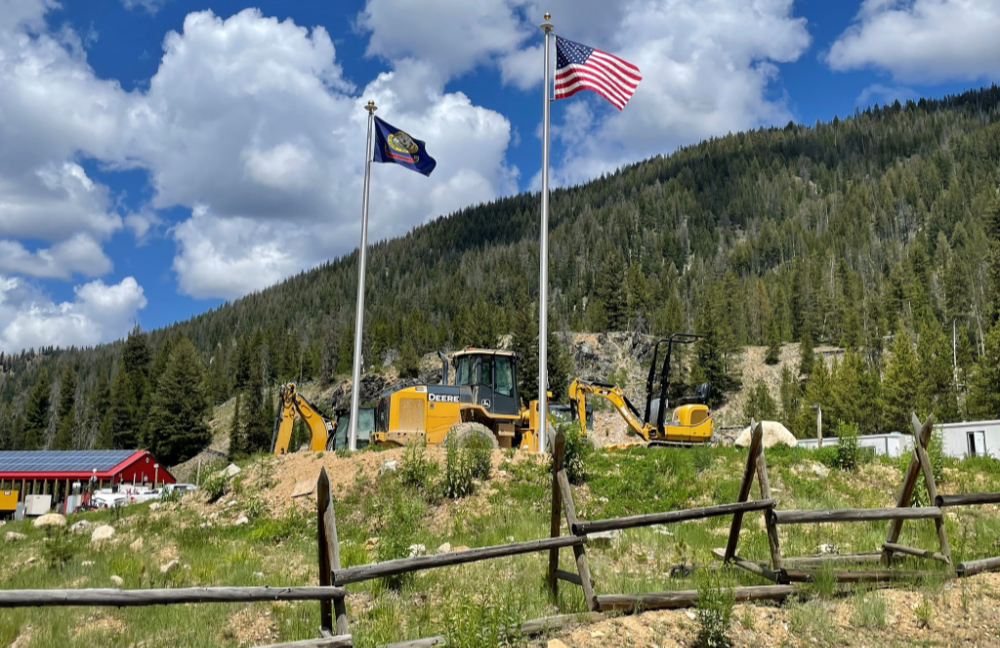Modern technology, old mining law can make net-zero a reality

If the U.S. is to achieve its carbon and renewable energy targets, policymakers must harmonize the mesh point between U.S. renewables and the statutory directive to develop domestic minerals under the General Mining Law, James Voyles, environmental attorney with Lewis Roca, says. Otherwise, the need for raw materials for renewables may clash with mining restrictions, he says.
If you were asked how renewable energy and a mining law written in 1872 are connected, I would expect your answer to be “they aren’t.” That would have been my answer years ago as well. But policy and technological developments over the past few decades have put the American renewable energy transition and the General Mining Law of 1872 on a path that makes them inseparable.
The Biden administration’s current policy is to pursue a pollution-free power sector by 2035 and a net-zero economy by 2050. To that end, the National Renewable Energy Laboratory recently issued a report to illuminate a path towards decarbonization by 2050. Interior also announced plans to lease new sections of the outer continental shelf for offshore wind development. To date, the U.S. has installed 102.8 gigawatts (GW) of solar capacity and 118 GW of wind capacity. America’s renewable deployment has been incredible, and the pace will quicken.
The connection between renewable energy and the General Mining Law starts to manifest when the collective “we” begin to realize that the amount of planned renewable capacity will require massive amounts of minerals if renewables are to be deployed at scale—and they will be deployed at scale.
The world isn’t producing enough minerals for energy shift
In fact, the Energy Information Administration has forecast that 17 additional GWs of solar capacity and six GWs of wind capacity will be installed in 2022. Six GWs of wind capacity equals approximately 2,184 utility-scale wind turbines, and each turbine can require up to 335 tons of steel, 4.7 tons of copper, 1,200 tons of concrete, three tons of aluminum, and two tons of rare earth elements.
The connection between renewables and the General Mining Law becomes clearer when “we” realize that the U.S., and the world, are not currently producing enough minerals to support a worldwide renewable energy shift led by wind, solar, electric vehicles, and grid-scale batteries.
A 2020 World Bank report shows that production of minerals such as copper, graphite, vanadium, lithium, nickel, and cobalt will need to grow exponentially to meet the demands of a world seeking to electrify everything. Further, the International Energy Agency issued a report early this year calling for a seven-fold increase in total market size for critical minerals, including copper, cobalt, manganese, and other rare earth elements by 2030.
These statistics make it seem incumbent upon nations capable of producing “renewable energy minerals” under stringent environmental regulations to institute policies, regulations, and incentives that promote the production of the materials needed for the renewable energy transition.
The US is poised to lead
The U.S. is uniquely poised to lead the world in mineral production based on these criteria and may want to consider policies like tax incentives for producing conductive metals or expedited permitting for battery minerals. However, the opposite seems to be occurring based on recent legislative proposals in the House of Representative’s Build Back Better Act.
At this point, the connection between renewables and the General Mining Law comes into plain view. The law declares the policy of the U.S. to be developing a domestic mining industry that ensures the satisfaction of industrial minerals in a way that reduces environmental impacts— renewables require industrial minerals and reduce environmental impacts.
The statute also allows persons and companies to stake and hold claims and exclusive rights to hard-rock mineral deposits on lands managed by the federal government. For a nation seeking to achieve 100% renewable energy penetration in the next 29 years, a statute like the General Mining Law seems indispensable.
The only real statutory mechanism to prevent the development of domestic minerals on federal land is called a mineral “withdrawal.” It is found in the Federal Lands Policy and Management Act and allows the Interior and Agriculture Departments to withhold federal lands from disposition under all general land laws, including the General Mining Law.
Late last month, the Forest Service submitted a 20-year mineral withdrawal application to the Bureau of Land Management that would remove 225,378 acres of the Superior National Forest in Minnesota from mineral disposition or lease. This action initiates a two-year lands segregation that prohibits the granting of new permits for mineral development and related activities.
As with any withdrawal, this action would be subject to public comment and would be eligible for a 20-year extension. If successful, this withdrawal would all but shutter a proposed underground copper and nickel project. This project, while controversial, would produce copper, nickel, and other “renewable energy minerals.”
If the U.S. is to achieve its carbon and renewable energy targets, it is incumbent upon policymakers to harmonize the mesh point between U.S. renewables and the statutory directive to develop domestic minerals under the General Mining Law. Otherwise, the U.S. will not have the raw materials needed to successfully transition to renewables.
Without such a harmonization, efforts to meet both U.S. policy objectives—a net-zero economy and a domestic mineral supply—run the risk of falling short.
It also seems prudent for mining lawyers to assess their project’s exposure to a withdrawal application to ensure that their project is sufficiently connected to the policy edicts of net-zero and domestic mineral production to stave off any adverse actions.
(This column does not necessarily reflect the opinion of The Bureau of National Affairs, Inc. or its owners.)
(By James Voyles)
More News
{{ commodity.name }}
{{ post.title }}
{{ post.date }}




Comments